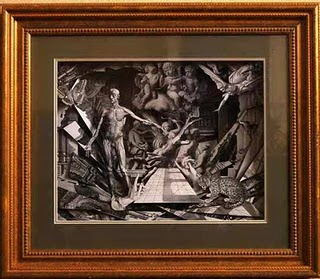Some Reflections on Mythology
From
the creation out of Chaos and the birth of the Olympian gods and
goddesses, ancient Greek myths have shaped and informed Western
consciousness
Green Man
Through
subsequent artistic representations, paintings and sculptures have
helped define what we call beauty, setting down a yard-stick against
which even modern art is sometimes measured
Shakespearean 'mythology' from The Tempest
3D stage design by Mike Healey
In my work I have tried frequently to reinterpret these classical stories and to find relevance for contemporary audiences
Pagan God by Mike Healey
In
some cases I have gone back to times before the classical Greek myths,
to an even darker pagan age when fearful creatures inhabited the
forests, demanding human sacrifices to appease their anger - as in the
picture above
Persephone
I
have also tried to explore the great fertility myth associated with
Persephone and her rape and abduction by Hades, King of the Underworld
Demeter - pagan goddess
This
great myth - representative of fundamental fertility/creation cycles -
is a rich source for artists like me, drawn as we are to natural forms
within an ever-changing natural world
Often, however, it is necessary to go against traditional, 'classical' representations and re-invent mythical figures - as in my recent drawing of Venus, the goddess of Love
Green Venus
In
the above picture I have made Venus a pagan figure, lustful and
somewhat scary - an image far removed from 'sanitized' Classical Greek
or later Renaissance representations
It is this constant attempt to reinterpret mythological figures that, for an artist at least, is particularly fulfilling
Mike Healey


















